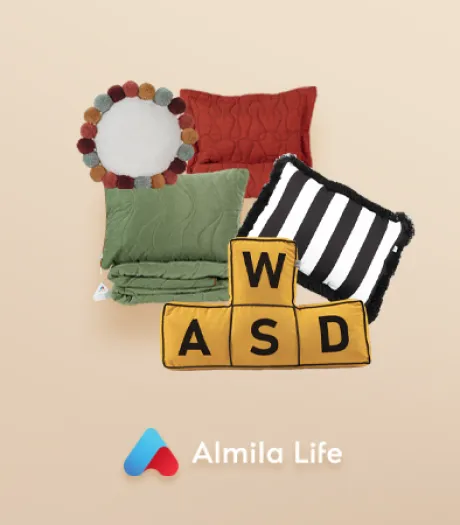
Temiz ve ferah bir yaşam alanı oluşturmak için düzenli olarak zeminleri süpürüp yüzeyleri silmek elbette önemlidir. Ancak çoğu zaman fark edilmeyen ya da ihmal edilen bir detay vardır: duvar temizliği. Toz zerrecikleri yalnızca mobilyalar üzerinde birikmez aynı zamanda ev duvarlarında da zamanla gözle görülmeyen tabakalar oluşturur. Üstelik bu tozlar hareket ettikçe havaya karışarak tekrar zemine çöker ve yapılan temizlik kısa sürede etkisini yitirir. Bu nedenle duvarların 3 ila 6 ayda bir silinmesi hijyenin sürdürülebilirliği açısından oldukça önemlidir.

Duvar Neyle Silinir?
Duvar yüzeylerini temizlerken kullanılan ürün ve malzemeler, uygulamanın verimliliği açısından büyük önem taşır. Duvarın kaplama türüne göre kullanılacak malzemeler de değişkenlik gösterebilir.
1. Duvarın tozunu alın: Temizliğe başlamadan önce duvarların üzerindeki toz ve örümcek ağlarını temiz bir mikrofiber bez, tüy tutmayan kuru bir bez ya da elektrik süpürgesinin fırçalı başlığı ile alın. Bu adım, sulu temizlikte kirin dağılmasını önler.
2. Duvar tipini belirleyin: Duvarınız su bazlı boyalı, yağlı boyalı, duvar kağıdı kaplı ya da dekoratif kaplama olabilir. Her yüzey farklı temizlik yaklaşımı gerektirir. Örneğin, su bazlı boyalar aşırı ovmaya karşı hassastır.
3. Ilık su ve sabun karışımı hazırlayın: Genel bir temizlik için ılık su içerisine birkaç damla bulaşık deterjanı veya doğal bir temizleyici olarak sirke ekleyebilirsiniz. Sert kimyasallardan kaçınmak duvarın boyasını korur.
4. Mikrofiber bez veya sünger kullanın: Bezi hazırladığınız karışıma batırın, ardından fazla suyunu sıkarak nemli hâle getirin. Duvarı yukarıdan aşağıya doğru silin. Böylece su akıntıları altta kalan temiz alanlara zarar vermez.
5. Leke varsa nazikçe ovun: Kurumuş lekeler için karbonat ve su karışımından elde edilen doğal macunu lekeli bölgeye uygulayarak nazikçe silebilirsiniz. Aşındırıcı sünger ya da fırça kullanmaktan kaçının.
6. Temiz su ile durulama yapın: Sabunlu suyla silinen duvarlar ardından temiz, nemli bir bezle tekrar silinerek durulanmalıdır. Bu adım sabun kalıntılarını önler.
7. Duvarı kurulayın: Temizlik sonrası duvarın daha kısa sürede kuruması ve su izlerinin kalmaması için kuru, pamuklu bir bezle üzerinden geçebilirsiniz.
8. Düzenli temizlik alışkanlığı kazanın: Duvarlarınızı belirli aralıklarla silmek, lekelerin kalıcı hâle gelmesini önler ve evinizin her daim temiz görünmesini sağlar.

Duvar Silme Suyuna Ne Konur?
Evde doğal yöntemlerle duvar temizliği yapmak isteyenler için temizlik suyuna eklenecek maddeler oldukça önemlidir.
Bulaşık Deterjanı: Bir kova ılık suya birkaç damla bulaşık deterjanı eklendiğinde hafif kirler ve yağ lekeleri kolayca çıkabilir. Özellikle mutfak duvarlarında etkilidir.
Sirke: Doğal bir dezenfektan olan beyaz sirke suyla karıştırıldığında hem hijyen sağlar hem de kötü kokuları yok eder. 1 litre suya yarım çay bardağı sirke ekleyebilirsiniz. Özellikle mutfak ve banyo duvarlarında kullanıma uygundur.
Karbonat: Lekeleri çıkarmada etkili olan karbonat, duvar silme suyuna eklendiğinde nazik bir temizleyici işlevi görür. 1 litre suya 1 tatlı kaşığı karbonat yeterlidir. Daha inatçı lekeler için karbonatı macun hâline getirerek doğrudan lekenin üzerine uygulayabilirsiniz.
Arap Sabunu: Doğal ve çok yönlü bir temizleyici olan arap sabunu duvarlar için de uygundur. Birkaç yemek kaşığı arap sabunu ılık suya eklendiğinde etkili bir temizlik suyu elde edilir.
Lavanta Yağı veya Limon Yağı (isteğe bağlı): Hem hoş koku vermesi hem de antibakteriyel özellikleri sayesinde birkaç damla uçucu yağ da karışıma eklenebilir. Ancak duvarın göze çarpmayan bir kısmında test yapılması önerilir.
Amonyak (Dikkatli Kullanılmalı): Yağlı boyalı duvarlar için etkili bir çözücü olan amonyak, sadece iyi havalandırılan alanlarda ve eldivenle kullanılmalıdır. 1 litre suya 1 yemek kaşığı amonyak eklenmesi yeterlidir. Bu yöntem duvar kağıtları ve su bazlı boyalar için uygun değildir.

Duvar Silmenin Püf Noktaları Nelerdir?
Duvar silmenin püf noktaları arasında en önemlisi duvarın yapısına uygun ürün ve ekipman kullanmaktır. Ayrıca bezin nem oranı çok kritik bir detaydır. Kurumuş bez lekeleri iyi çıkaramazken fazla ıslak bez de duvara zarar verebilir. Suyun sıcaklığı ise ılık olmalı çok sıcak sudan kaçınılmalıdır. Ayrıca silme işleminden önce bir bölgeye test yapılması tavsiye edilir. Bu test sayesinde temizlik solüsyonunun boya ya da kaplamaya zarar verip vermeyeceği anlaşılabilir.
Arap Sabunu ile Duvar Silme Nasıl Yapılır?
Doğal ve zararsız bir temizlik ürünü olan arap sabunu ev temizliğinde sıkça tercih edilen bir malzemedir. Arap sabunu ile duvar silme işlemi için bir kova ılık suya birkaç yemek kaşığı arap sabunu eklemek yeterlidir. Bu karışım mikrofiber bez yardımıyla uygulanmalı ve sonrasında durulama gerekmez. Arap sabunu hem kirleri söker hem de hoş bir koku bırakır. Özellikle alçı veya boyalı duvarlar için oldukça idealdir.

Duvar Temizleyici Seçerken Nelere Dikkat Edilmeli?
Ev temizliğinde en fazla ihmal edilen alanlardan biri olan duvarlar, zamanla toz, is, el izi ve çeşitli lekelerle kirlenebilir. Ancak her temizlik ürünü, duvar yüzeyine uygun olmayabilir. Yanlış seçilen ürünler boyayı soldurabilir, yüzeyde kalıntı bırakabilir veya duvar kağıtlarını zarar verebilir. Bu nedenle duvar temizleyici seçerken dikkat edilmesi gereken bazı önemli noktalar vardır.
1. Duvarın Yüzey Malzemesine Uygunluk: Her duvar tipi aynı temizlik ürününü tolere edemez.
Su bazlı boyalar için hafif ve kimyasal içermeyen temizleyiciler tercih edilmelidir.
Yağlı boyalı yüzeyler daha dayanıklıdır, bu nedenle biraz daha güçlü temizlik ürünleri kullanılabilir.
Duvar kağıtları için ise kesinlikle aşındırıcı olmayan, nemi fazla tutmayan ürünler kullanılmalıdır.
2. Aşındırıcı Madde İçermemesi: Temizleyici içerisinde ağır kimyasallar, çamaşır suyu ya da amonyak gibi aşındırıcı maddeler varsa, duvar yüzeyinde leke, solma ya da soyulma oluşabilir. Özellikle renkli boyalı duvarlarda bu tip ürünlerden kaçınılmalıdır.
3. pH Değeri Dengeli Olmalı: Temizlik ürününün pH değeri çok yüksek ya da çok düşük olmamalıdır. Yaklaşık 7 olan pH nötr olan ürünler hem etkili temizlik sağlar hem de yüzeye zarar vermez.
4. Koku ve Alerjen İçeriği: Bazı temizlik ürünleri yoğun kokulu olabilir veya alerjik reaksiyona neden olabilecek maddeler içerebilir. Özellikle çocuklu ya da hassas bünyeye sahip bireylerin yaşadığı evlerde parfümsüz ya da doğal içerikli ürünler tercih edilmelidir.
5. Kolay Durulanabilir Olması: Duvar temizliğinde kullanılan ürünün yüzeyde kalıntı bırakmaması önemlidir. Durulanması zor olan ürünler, zamanla duvarda matlaşma ya da yapışkanlık oluşturabilir.
6. Çevre Dostu ve Doğal İçerik Tercihi: Son yıllarda çevre dostu, biyolojik olarak çözünebilen ve bitkisel bazlı temizlik ürünleri oldukça popüler. Bu tür ürünler hem doğaya zarar vermez hem de evde sağlıklı bir ortam sağlar.
7. Uygulama Kolaylığı: Sprey formundaki ürünler doğrudan yüzeye uygulanabildiği için pratiklik sağlar. Ancak köpüklü ya da jel formundaki ürünlerin uygulanması biraz daha zaman alabilir. Kişisel ihtiyacınıza göre seçim yapmalısınız.

Kolay Duvar Silme Yöntemleri Nelerdir?
Kolay duvar silme için yapılacak en pratik şeylerden biri temizlik sırasında doğru aparatları ve uzun saplı ekipmanları kullanmaktır. Bu sayede yüksek yerlere ulaşmak da kolaylaşır ve zamandan tasarruf edilir. Mikrofiber moplar ya da teleskopik saplı bez tutucular iş yükünü azaltır. Temizliği kolaylaştıran bir diğer yöntem ise düzenli aralıklarla yapılan toz alma işlemidir. Böylece kirin katmanlaşması önlenir.
Fırçayla Duvar Silme İşe Yarar mı?
Bazı duvar türleri özellikle pütürlü veya desenli olanlar, bezle yeterince temizlenemeyebilir. Bu durumlarda fırçayla duvar silme daha etkili sonuçlar verir. Ancak fırçanın yapısı mutlaka yumuşak olmalıdır. Sert kıllı fırçalar, boyalı ya da kaplamalı yüzeyleri çizebilir. Fırçalı temizlik yöntemi genellikle banyo gibi alanlarda tercih edilir.
Banyo Duvarları Nasıl Temizlenir?
Banyolar nemli olduğu için sabun artıkları, su lekeleri ve küf oluşumu yaygındır. Fayans araları için karbonat ve sirke karışımı kullanılabilirken, geniş yüzeyler için doğal sabunlu su idealdir. Temizlik sonrası mutlaka durulama yapılmalı ve ortam havalandırılmalıdır.
Tertemiz ve sağlıklı bir yaşam alanı oluşturmak için duvar temizliği ihmal edilmemesi gereken detaylardan biridir. Doğru malzeme, uygun teknik ve düzenli bakım sayesinde duvarlarda biriken toz, leke ve kalıntılardan kolayca kurtulmak mümkündür. Bu süreçte duvar silme püf noktaları dikkate alınarak yapılan temizlik yalnızca estetik değil, hijyen açısından da olumlu sonuçlar doğurur.
İlginizi Çekebilir→ Halıdan Kahve Lekesi Nasıl Çıkar?








































